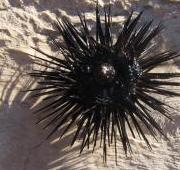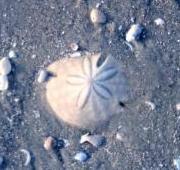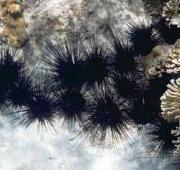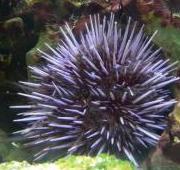 The sea urchin in found across the ocean floors worldwide, but rarely in the colder, polar regions. Sea urchins are commonly found along the rocky ocean floor in both shallow and deeper water and sea urchins are also commonly found inhabiting coral reefs.
The sea urchin in found across the ocean floors worldwide, but rarely in the colder, polar regions. Sea urchins are commonly found along the rocky ocean floor in both shallow and deeper water and sea urchins are also commonly found inhabiting coral reefs. There are nearly 200 different species of recognised sea urchin, that come in all shapes and sizes. Some sea urchins are covered in long thin spikes where others have a hard shell that is made up of chalky plates. The red sea urchin is the longest living creature on earth, with some living more than 200 years.
There are nearly 200 different species of recognised sea urchin, that come in all shapes and sizes. Some sea urchins are covered in long thin spikes where others have a hard shell that is made up of chalky plates. The red sea urchin is the longest living creature on earth, with some living more than 200 years.


Sea urchins have a round shaped body and with long spines that come off it. The spines of the sea urchin are used for protection, to move about, and to trap food particles that are floating around in the water. Sea urchins have five paired rows of tiny tube feet which are found amongst the spines. The feet of the sea urchin have suckers which help the sea urchin to move about, capture food, and to hold onto the ocean floor.
Sea urchins also have little claw-like structure among their spines which the sea urchin uses for protection. These structures (known as pedicellarines) are small stinging structures that are not only used for defence and obtaining food, but are also vital in keeping the body of the sea urchin clean.
The mouth of the sea urchin (known as the Aristotle's lantern), is found in the middle on the underside of the sea urchin's body and has five tooth-like plates for feeding. The anus of the sea urchin is located on the top of the body. As with other echinoderms, sea urchins do not have a brain and instead rely on their water-vascular system which is like a circulatory system and comprises of water-filled channels that run through the body of the sea urchin.
Sea urchins spawn during the spring, and the female sea urchin releases millions of tiny, jelly-coated eggs into the water that are then fertilised by the sperm of the male sea urchin. The tiny sea urchin eggs become part of the plankton and the sea urchin babies (larvae) do not hatch for several months. The sea urchin young will not become large enough to retreat from the plankton and down to the ocean floor until they are between 2 and 5 years old.
Due to dredging on the ocean floor and pollution in the water, the sea urchin populations are declining and the sea urchin and today thought to be threatened with extinction.

